Sited at the meeting point of Nile Valley and Lower Egypt Delta, bound by two limestone plateaus; Giza on the west and Al-Muqatam on the east, Great Cairo, already one of Africa‘s largest megacities, an urban agglomeration with a population of 23 million, is projected to grow to 38 million people by 2050. There is a global concern and interest in the impact of urbanization on regional climate and urban air quality as the urban structure is responsible for reducing air circulation and lowering the wind speed, which promotes concentrations of pollutants from the industries, transportation facilities, power generation plants, and other heating appliances in the urban atmosphere. The urban form of Great Cairo is no exception, as the city is one of the most polluted cities in the world, with extremely high levels of air pollutants.
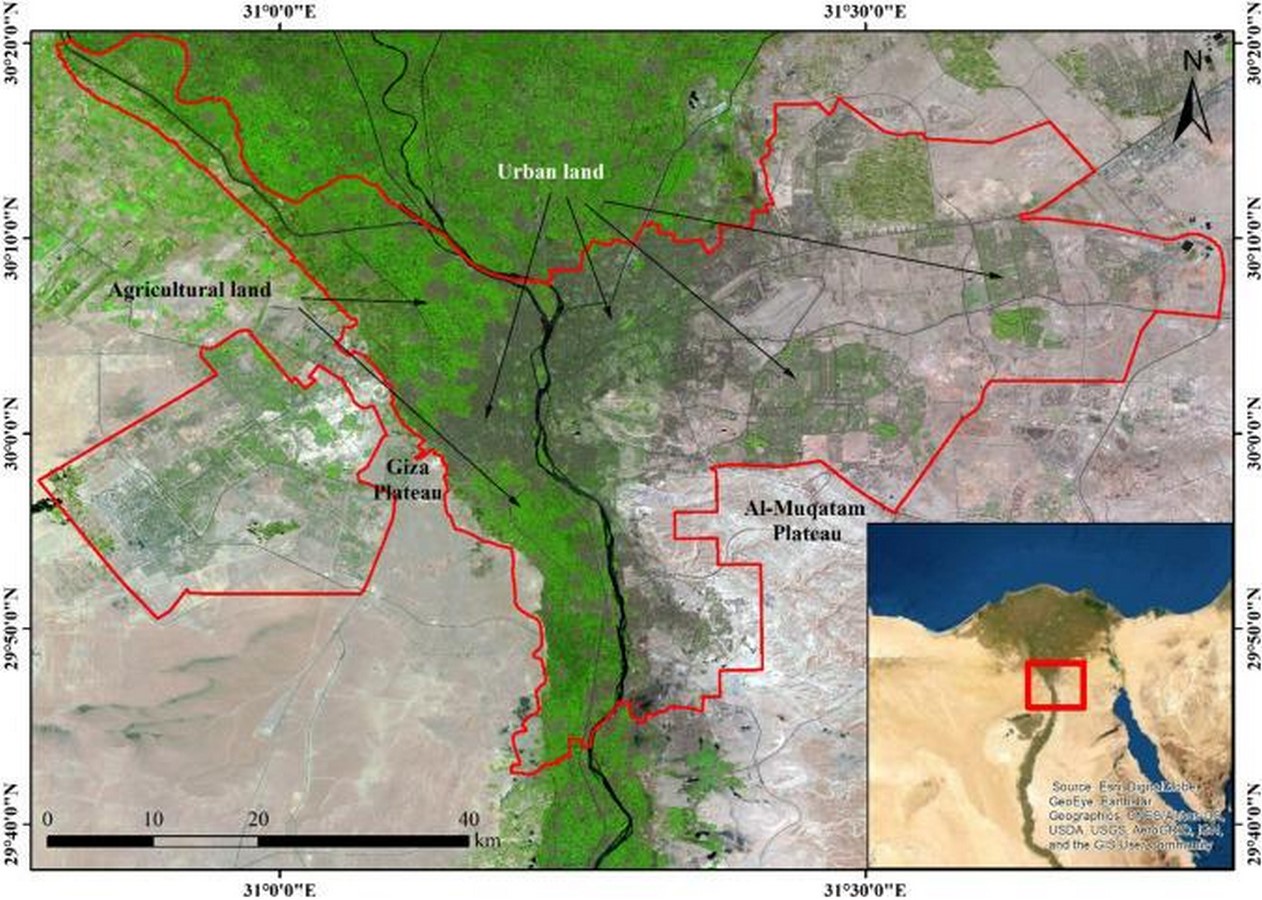
Exploring the Urban Form of Great Cairo
Upon morphological urban analysis, it is clear that Cairo has undergone several expansions through different periods of time and is still subjected to rapid changes, both formal and informal developments. Though the new communities are expanding towards Cairo’s desert boundaries with new districts, the old districts are still growing and attracting people. Due to such expansions, the urban mass of Greater Cairo doubled in less than 30 years from 234 km2 in 1973 to more than 550 km2 in 2006. The 6th October district on the West developed in 1979 was one such expansion. Another recent new district, the New Cairo was formed on the East in 2000. The urban form of the new districts differed in terms of the width of the streets being wide, building heights being short, population density being low, and the area of green spaces being more than the districts in the older urban core.
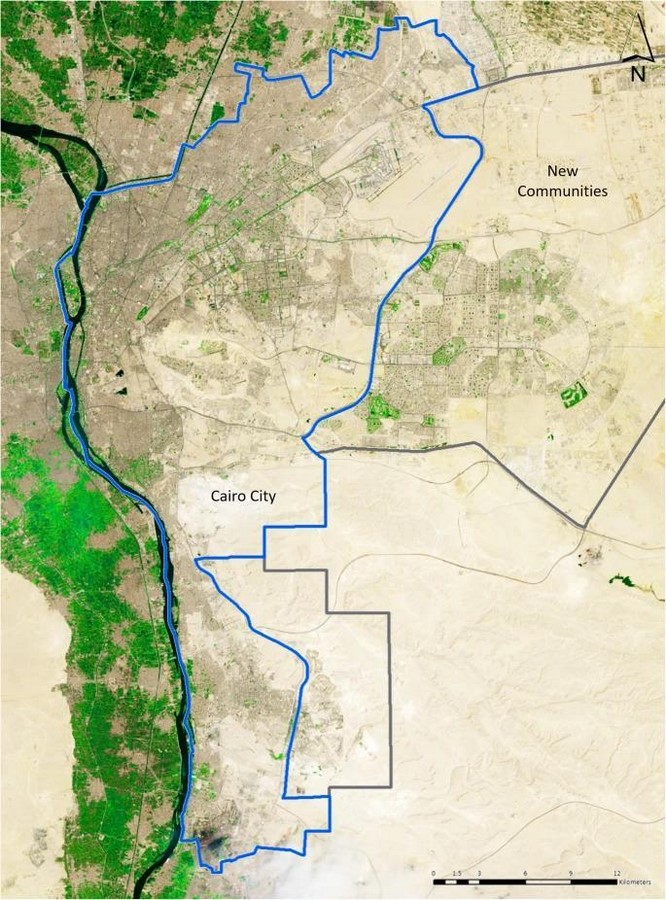
On analyzing the dominant functions in the city, it is evident that though the Great Cairo hosts more than one-third of the total national industry in Egypt, some of its districts are dominated by agricultural fields in addition to the urban communities in the 6th of October district and the New Cairo district. The most important industrial regions are Helwan in the South, Tebeen in the South, and Shubra Al-Khima in the North while Monshat El-Kanater in the Northwest and Badrasheen in the South are mainly agricultural fields. The major industrial activities include the manufacture of iron, steel, cement, fertilizers, equipment, food and brick, and power plants.
Major Causes of Urban Pollution
The annual nationwide average PM2.5 level in 2019 was 13.6 times greater than the WHO recommended levels due to pollution from traffic congestion, slash-and-burn land clearing, industrial power, and open waste burning.
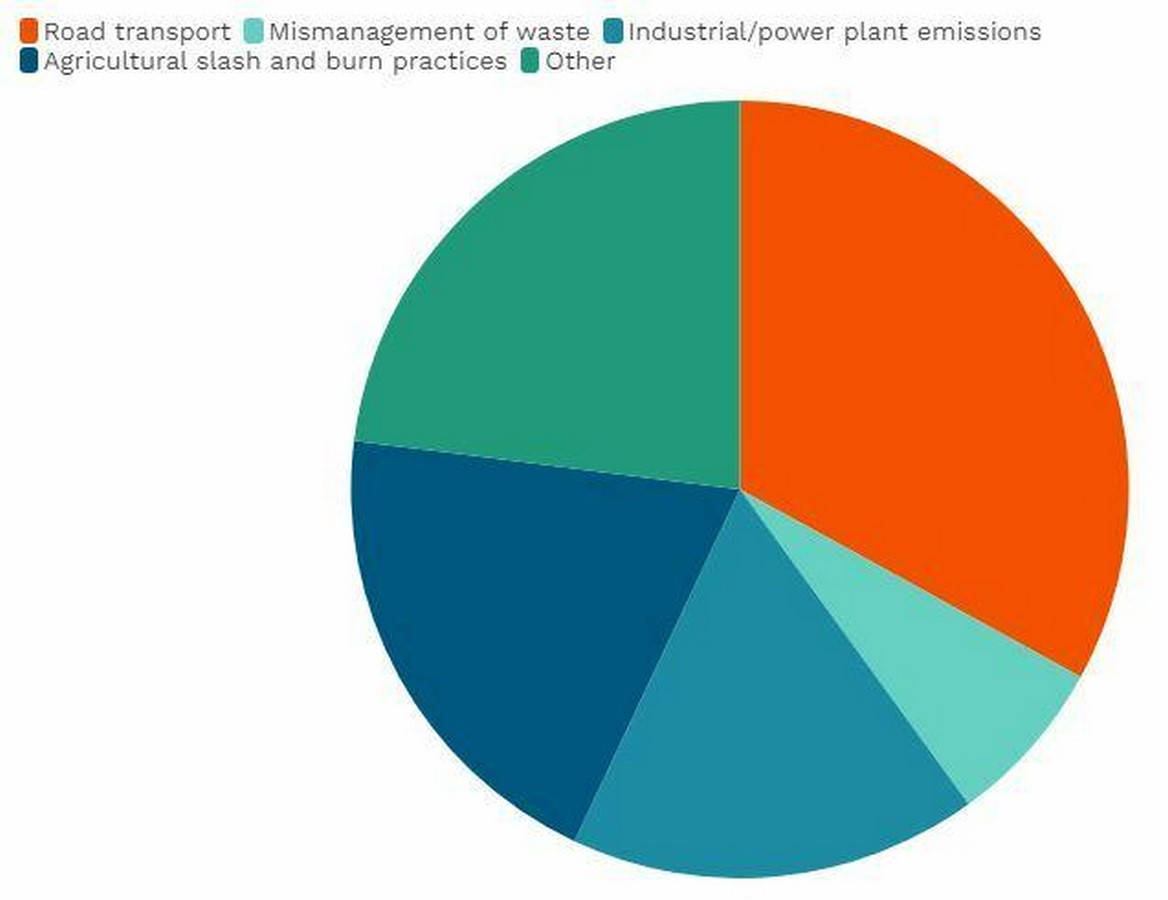
Elephant in the Room
In the great Cairo area, road transport is the main contributor to PM2.5 air pollution. The problem is exacerbated by a large number of aging private cars and taxis, which account for 80% of the congestion. Until recently, the absence of traffic charges and a 50% subsidy on gasoline and diesel has made it difficult to incentivize people to shift away from these polluting vehicles. Additionally, the public transportation options are inadequate for a megacity, with only 4kms of metro available per million population.
Agricultural slash and burn
Urbanization and the growing demand for land for development projects due to the migration of people to the old core city from rural areas see a potential for agricultural lands to become real estate developments which causes this issue. The slash and burn technique in agriculture to get rid of agricultural waste or clear agricultural land for construction is the second major contributor to the city’s PM2.5 pollution. Moreover, farmers in the region burn rice straw after the harvest due to limited access to technology, resulting in a yearly black cloud over Great Cairo.
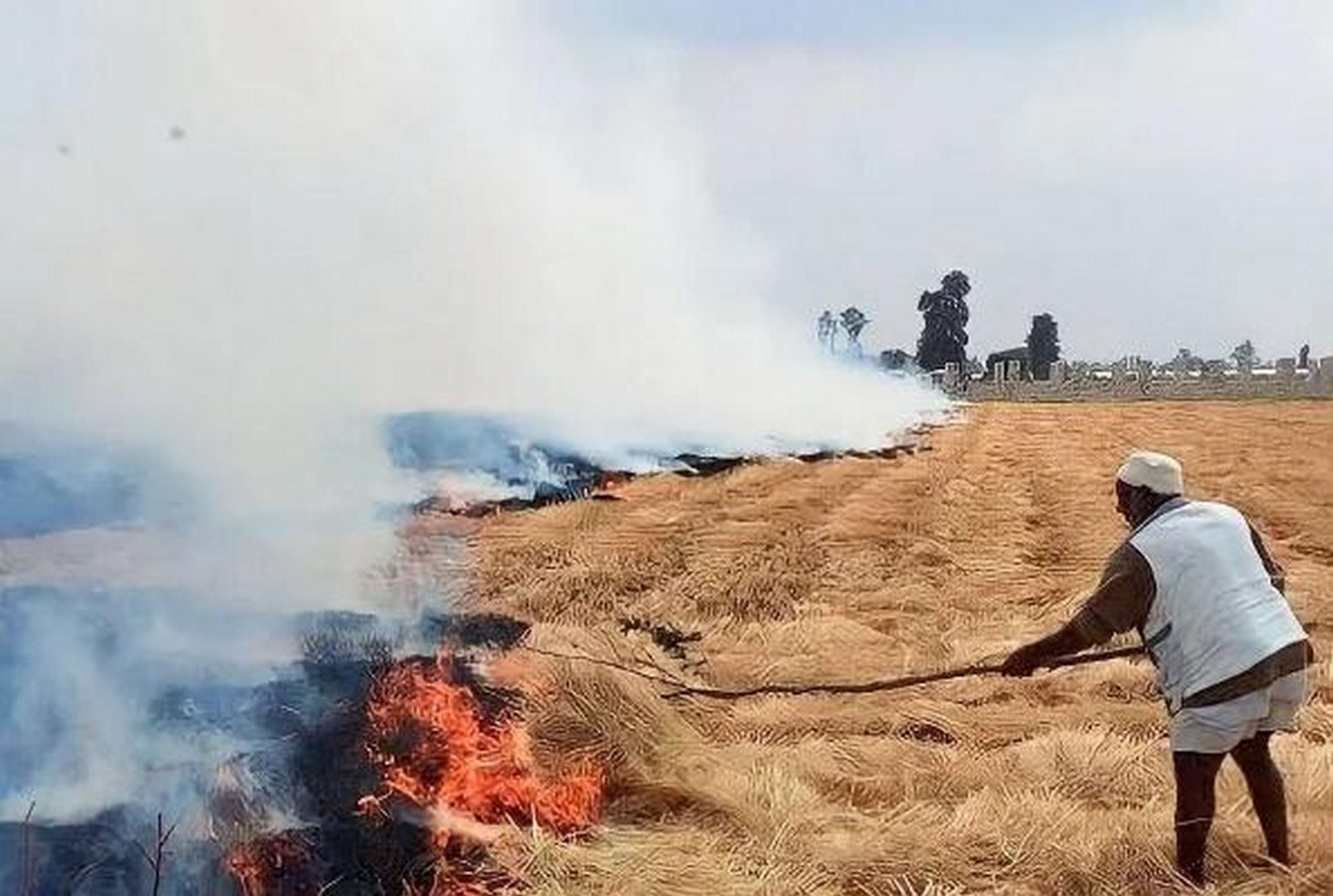
Industrial power and electricity generation
One-third of Egypt’s industrial activity is based in Cairo, thus contributing to air pollution in Cairo. It is the third important factor contributing to the city’s PM2.5 pollution. Despite pollution abatement projects, only a few factories have proper waste treatment facilities.
Lack of Green spaces
Currently, Cairo is losing significant amounts of its already limited green spaces due to the prioritization of other development projects. The satellite image shows the dominance of desert areas, the dense urban fabric, and the low availability of green spaces in the older districts of great Cairo. Plus, due to the increase in its population, the individual share of green spaces decreased from 0.87 to 0.74 m2. In addition to losing large areas of its agricultural lands, there is a significant growth of informal settlements with poor living conditions like poor air quality, lack of sanitation due to inefficient waste management, and water pollution that can be potentially mitigated by these green pockets.
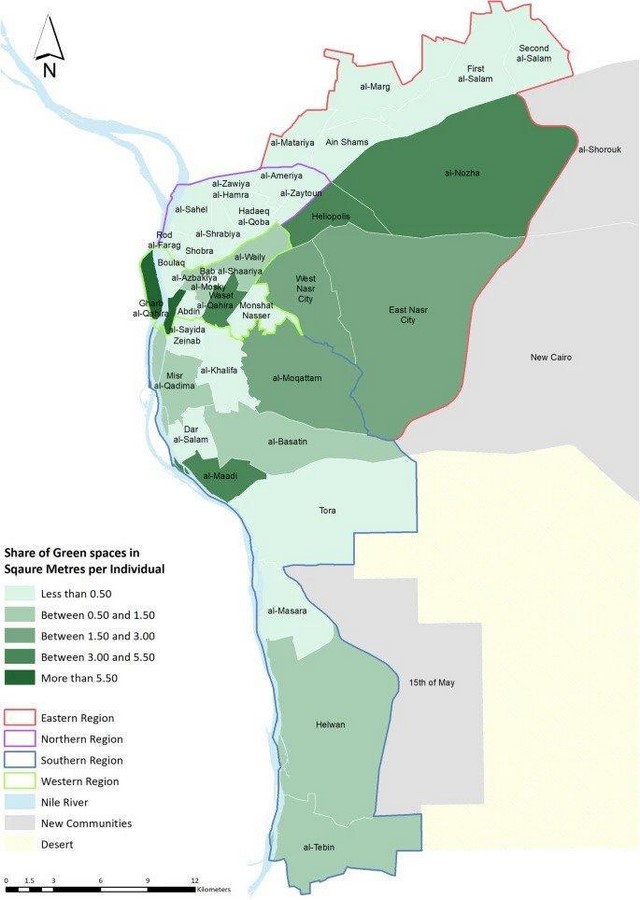
Co-relation between Urban Heat Island and Urban Pollution Island
Urban heat island and Urban pollution island are two important urban climate phenomena that occur in urban landscapes and are generally co-related. The urban heat island (UHI) refers to the warmer temperatures in urban land compared to the adjacent rural areas due to human activities while the urban pollution island (UPI) signifies the higher level of emission of pollutants into the urban atmosphere compared to its surroundings. Additionally surface urban heat island (SUHII) also refers to a higher land surface temperature in urban land compared to the adjacent rural areas. A significant link can be found between SUHII and the pollutants in the case of Cairo with the help of regression analysis.
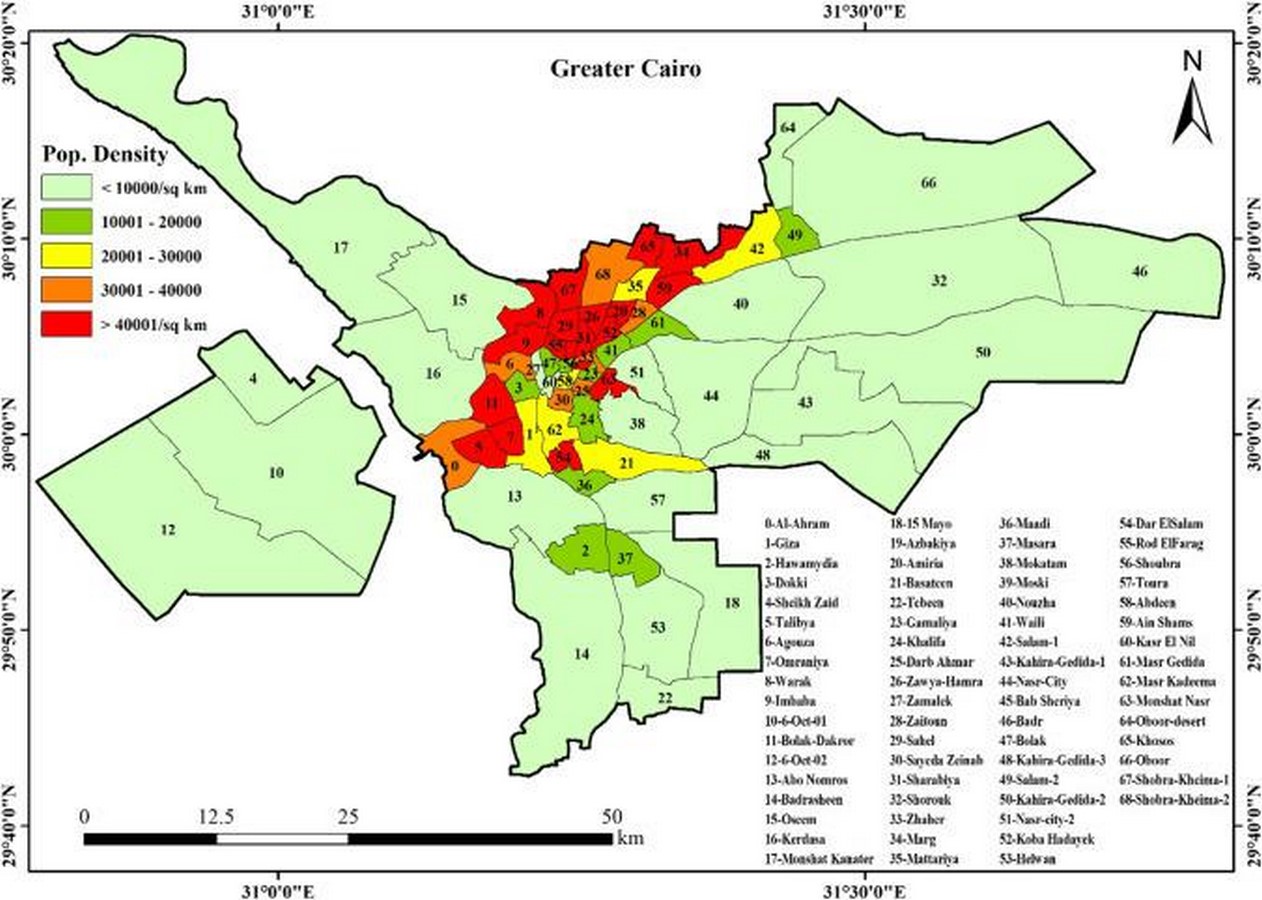
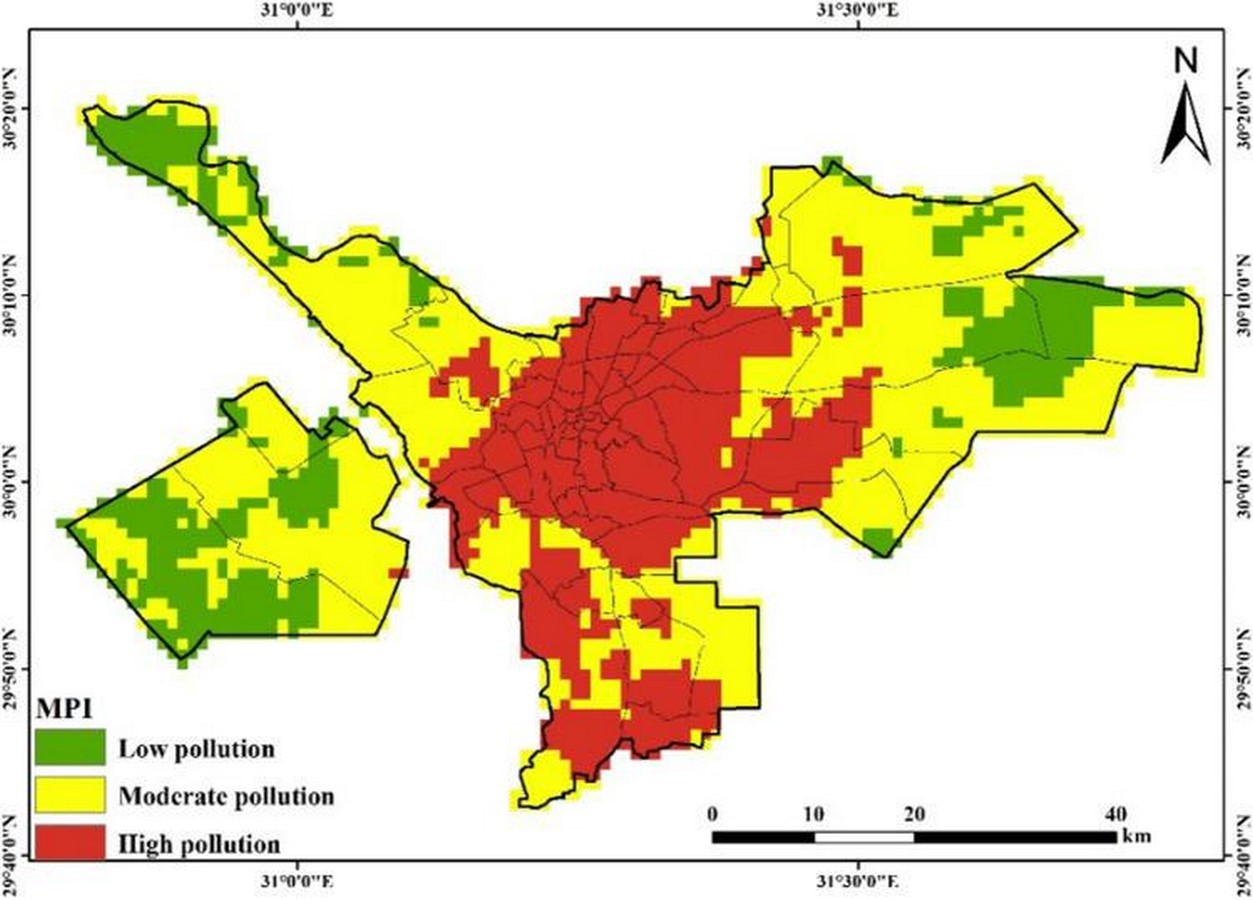
Results of Regression Analysis
Based on the comparison between the mapping of pollutants, population density, and SUHII, a positive relationship between SUHII and NO2 is observed which also suggests that the concentration of pollutants is directly proportional to SUHII, consequently heat-generating human activities. It is observed that this relationship tends to be high in spring compared to the fall. Also, comparing the population density map with the pollutants map suggests a positive relationship between the two. On the other hand, the correlation between SUHII and SO2 is poor, indicating that the urban heat island effect and population density have little or no influence on its distribution. Further pressing the fact that the spread of SO2 is mainly linked to industrial land use, which is predominantly found in Shubra Al-Kheima in the north and Tebeen in the south. The relationship between SUHII and CO is seasonal, with a relatively higher correlation during winter and spring, while it is weak during fall and summer.
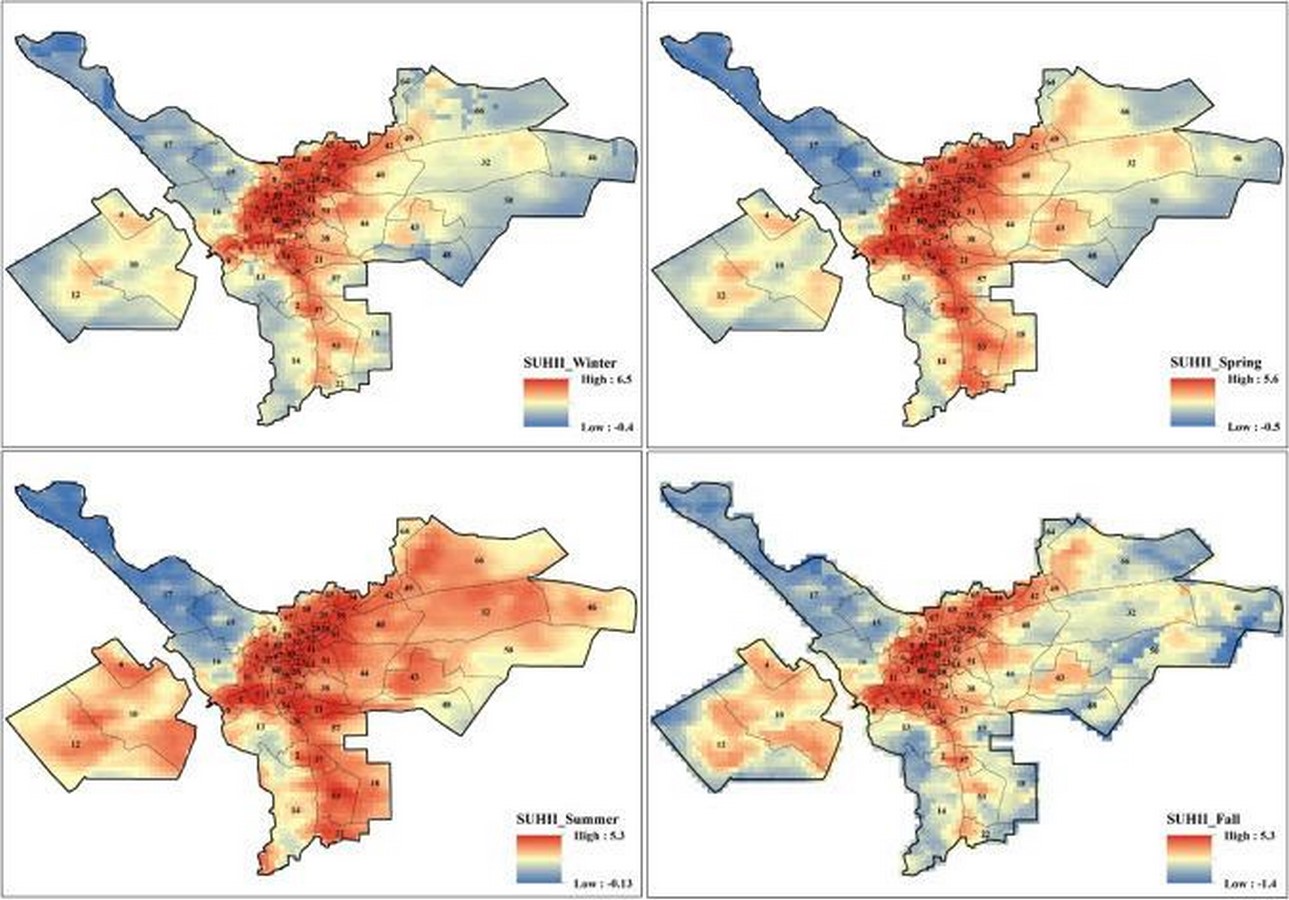
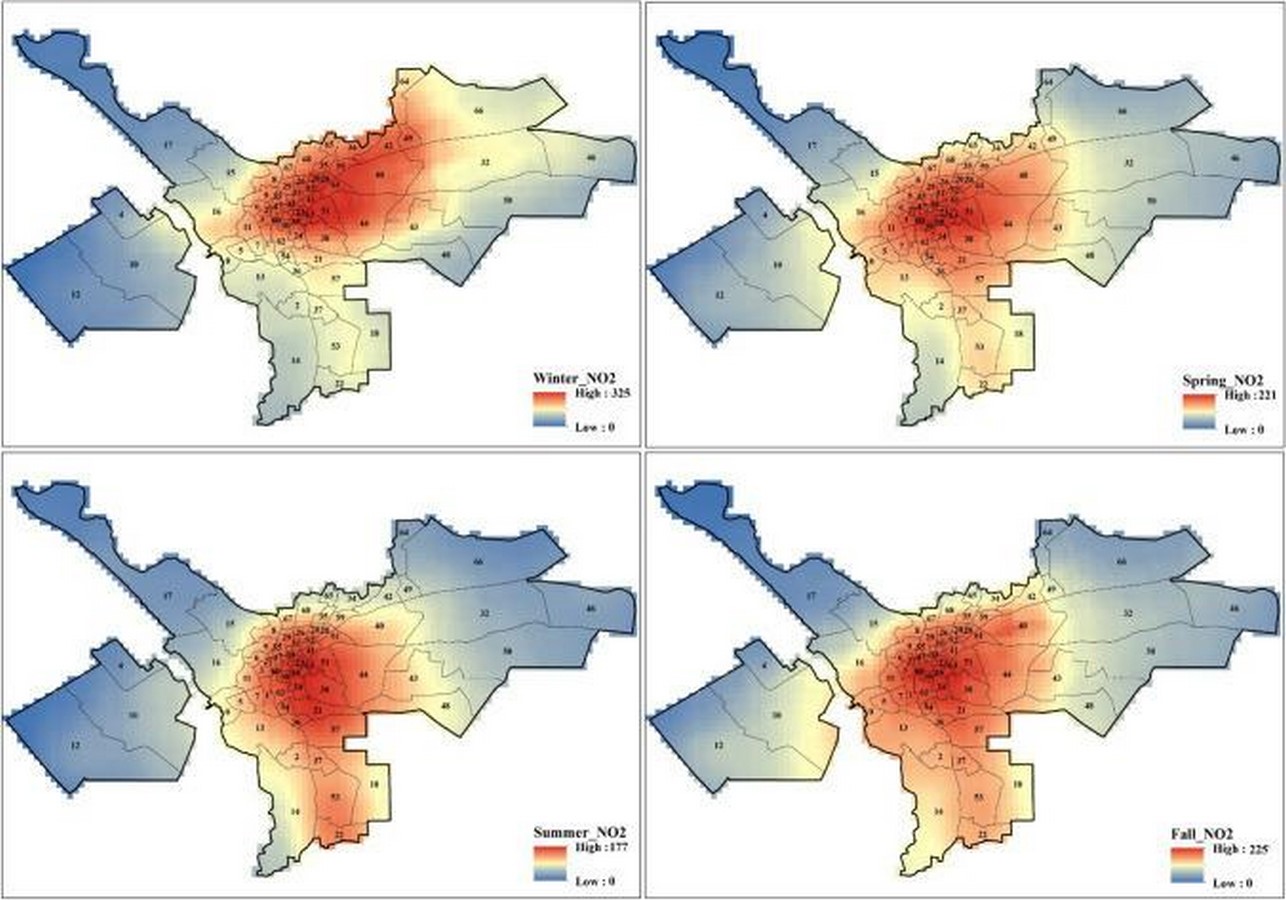
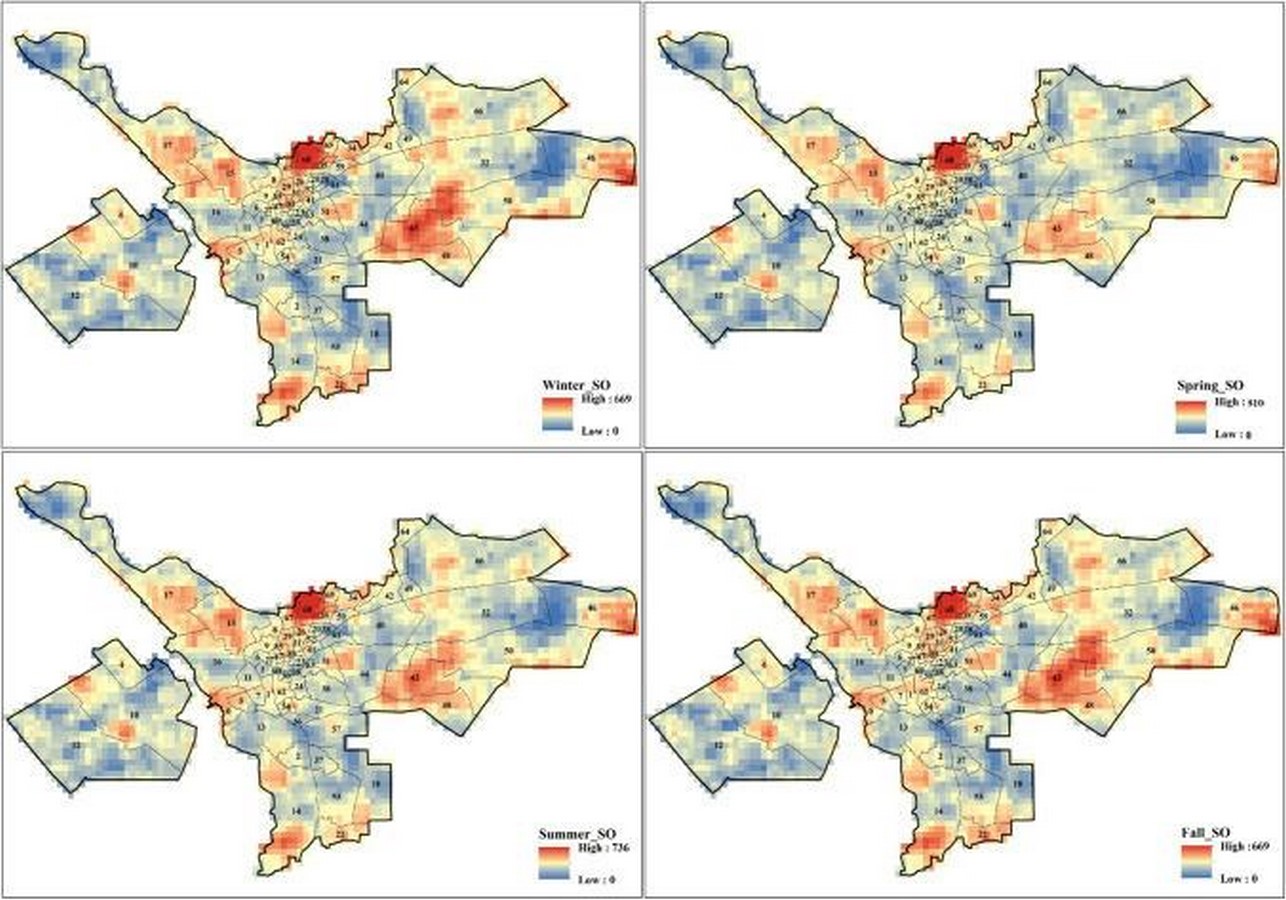
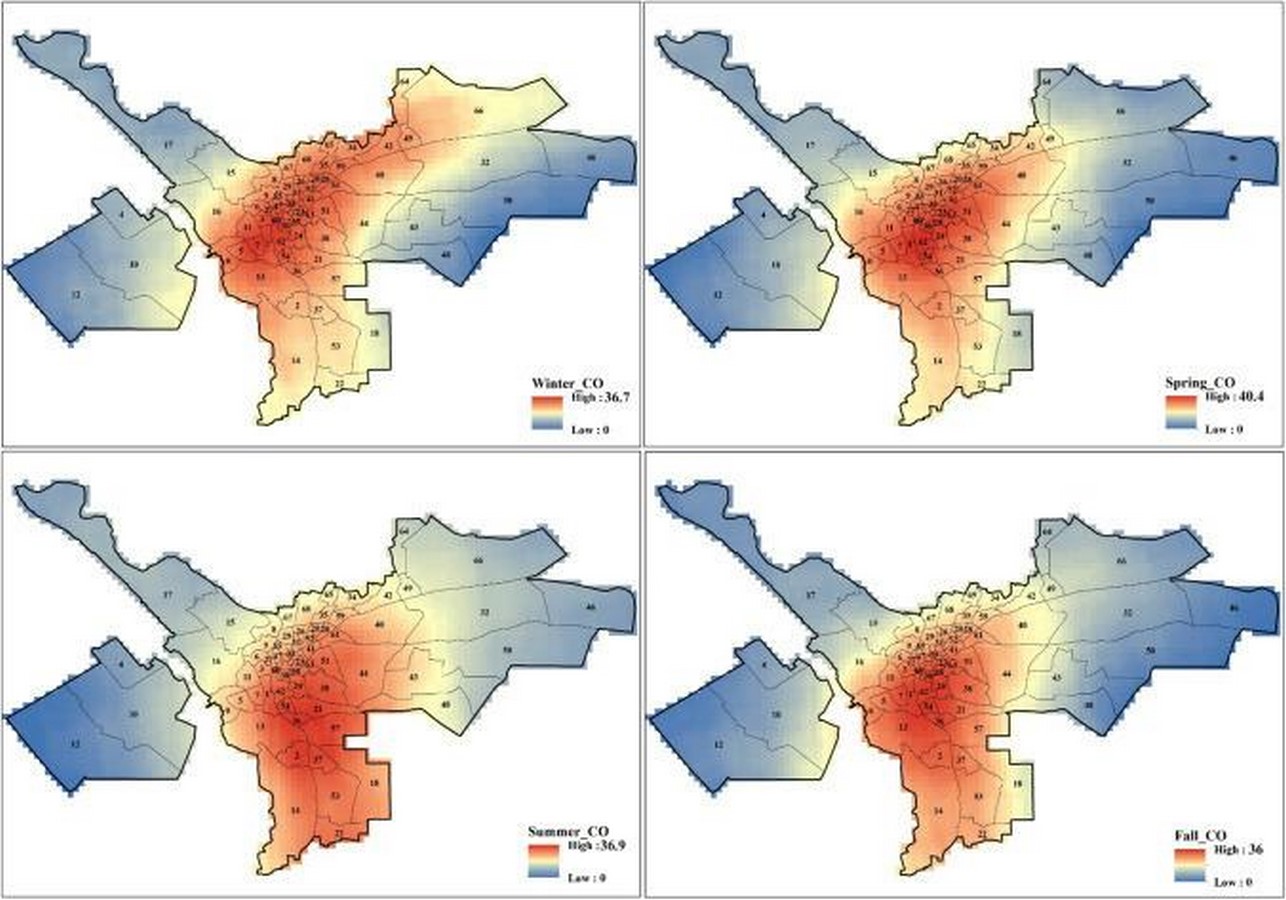
The highest correlations between NO2, CO, and SUHII are observed during the winter and spring seasons, possibly due to topographic and climatic influences. In Cairo, the wind is usually mild with an average speed of 4 m/s, which hinders pollutants from dispersing through the atmosphere. Thus, air pollution levels are highest when the weather is stable and high in humidity, which typically happens during winter and spring in Cairo. The city’s air distribution is also affected by its topography, with plateaus surrounding the urban area causing air masses to stagnate over the city and result in pollution buildup in the lower atmosphere. The emissions of air pollutants conforming to the climatic and topographic influences trigger the formation of an urban pollution island over the troposphere of Cairo during all seasons, with a major concentration in the highly populated and industrialized regions.
To Combat Urban Pollution in Cairo: Motive and Method
In Cairo, air pollution causes around 18,000 premature deaths, which is, 16% of the annual total. The projected economic impact of absenteeism and premature mortality in Cairo is expected to increase tenfold between 2019 and 2040 along a business-as-usual path. Cairo could raise $0.8bn, that is 16% of Cairo’s costs under a BAU scenario in 2040, if the city implemented a series of clean air measures to reduce air pollution. More importantly, in that year, over 3,400 lives could be saved, and Green greenhouse gas emissions reduced. The cumulative impact of the control measures on air pollution in Cairo from 2023-2040 could generate $6.6bn, save over 52,000 lives, and abate Green House Gas emissions.
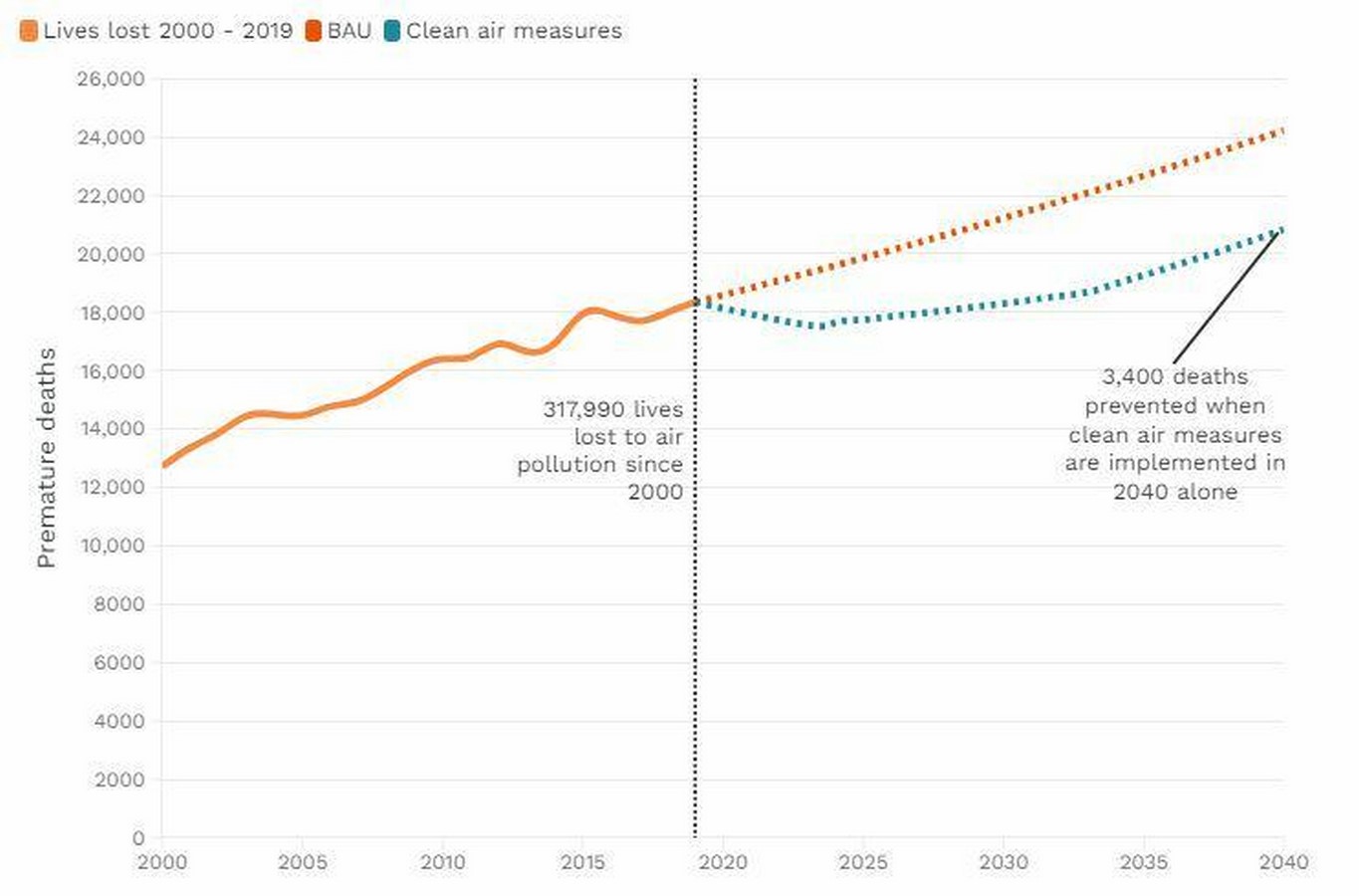
The Egyptian government is taking steps to address the problem by implementing clean air measures. It has halved fuel subsidies to control pollution caused by road transport, has engaged in the third phase of industrial pollution control by creating eco-friendly industrial zones in the city under an agreement between the government and UNIDO in 2022, has collected 500,000 tons, 90% of the annual straw produced to prevent slash and burn and has also decided to construct a new facility to recycle these agricultural wastes. Also, Environmental Organizations like Banlastic Egypt in collaboration with the German Embassy’s Cairo Climate Talks organized community events in Shalalat Park in Alexandria to create awareness and combat the harmful effects of Urbanization.
Furthermore, Architects and Urban designers like Islam El Mashtooly have proposed other unique solutions like the ‘Cairo Probiotic Tower’, shortlisted in the Experimental Category of the World Architecture Festival 2023 and expected to be realized by August 2025 to combat the Urban Pollution Island effect in Cairo. The proposed probiotic tower mainly consists of a large algae bioreactor tank that actively absorbs carbon dioxide from the host neighborhood, and produces carbon-neutral bio-fuel, and also the algae panels on the southern façades enhance absorption of carbon dioxide combatting air pollution. The Probiotic towers with their flexibility to be installed on existing abandoned buildings that can withstand extra load allow the community members to repurpose old, unused structures, rectifying past mistakes and creating a carbon-negative building. If applied nationwide, on rooftops, and abandoned structures it can turn “the barren concrete landscape” of Cairo into “an oasis of vertical greeneries” not only combatting pollution but also upgrading the urban fabric with “multipurpose, carbon-negative, communal hubs capable of filtering carbon dioxide” turning them into the city’s lost lungs.
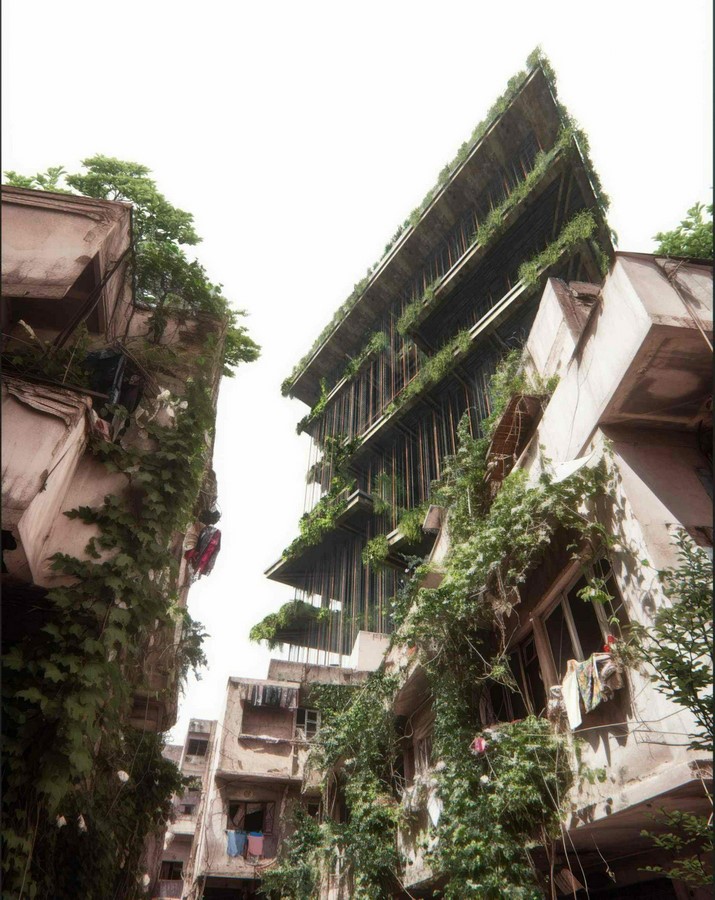

Reference list
- Aly, D. and Dimitrijevic, B. (2022). Public green space quantity and distribution in Cairo, Egypt. Journal of Engineering and Applied Science, 69(1). doi:https://doi.org/10.1186/s44147-021-00067-z.
- Aly, F. (2023). ‘Redefining Public Parks’: Leading the Battle Against Urbanization’s Impact on Egypt’s Green Havens | Egyptian Streets. [online] Egyptianstreets. Available at: https://egyptianstreets.com/2023/08/05/redefining-public-parks-leading-the-battle-against-urbanizations-impact-on-egypts-green-havens/ [Accessed 8 Oct. 2023].
- El Araby, M. (2002). Urban growth and environmental degradation. Cities, 19(6), pp.389–400. doi:https://doi.org/10.1016/s0264-2751(02)00069-0.
- ElHadary, H. (2022). Egypt Confronts a ‘Black Cloud’ of Air Pollution as COP27 Approaches. [online] Al-Fanar Media. Available at: https://www.al-fanarmedia.org/2022/09/egypt-confronts-a-black-cloud-of-air-pollution-as-cop27-approaches/ [Accessed 8 Oct. 2023].
- Hereher, M., Eissa, R., Alqasemi, A. and El Kenawy, A.M. (2021). Assessment of air pollution at Greater Cairo in relation to the spatial variability of surface urban heat island. Environmental Science and Pollution Research. doi:https://doi.org/10.1007/s11356-021-17383-9.
- Keleg, M.M., Butina Watson, G. and Salheen, M.A. (2022). A critical review for Cairo’s green open spaces dynamics as a prospect to act as placemaking anchors. URBAN DESIGN International. doi:https://doi.org/10.1057/s41289-022-00193-x.
- Kotb, M. (2023). ‘Cairo Probiotic Tower’ Shortlisted in Experimental Category of World Architecture Festival 2023 | Egyptian Streets. [online] Egyptianstreets. Available at: https://egyptianstreets.com/2023/08/01/cairo-probiotic-tower-shortlisted-in-experimental-category-of-world-architecture-festival-2023/ [Accessed 6 Oct. 2023].
- The Clean Air Fund (n.d.). Cairo and air pollution. [online] Clean Air Fund. Available at: https://www.cleanairfund.org/clean-air-africas-cities/cairo/.

























